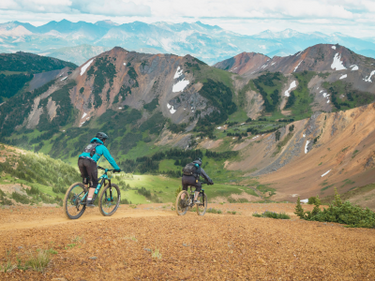Conditioning For Your Adventure on The Trail
It's finally time to get outside and explore the great outdoors. But before you head out on your next big hike or backpacking trip, it's important to get your body in shape. Even if you’re already active and feel like you’re in good shape, remember that hiking and especially backpacking introduce different challenges on the body compared to everyday workout routines.
Many people assume that if they can walk, then they can just go out and complete a long trek without conditioning their bodies, but that could lead to injury and an overall painful experience- even after the hike is done. To avoid such unpleasant experiences, take the time to prepare yourself and train appropriately.
We’ve listed a few of the most helpful tips to help prepare you for the trail this summer.
TIP #1: FOCUS ON THE RIGHT MUSCLES
Contrary to what some may think, hiking and backpacking is a full-body workout. Not only do your legs, ankles and feet get a workout, but in addition, the heart, lungs, core, hips and shoulders also contribute to keeping you on the trail. With this said, make sure you’re designing a routine that delivers a full-body workout and that focuses on both increasing muscle strength AND building endurance. By training with exercises that simulate different motions that replicate hike uphill climbs and downhill descents, your body can be better prepared for whatever adventure lies ahead.
TIP #2: CREATE A TRAINING SCHEDULE
Whether you’re going for a single day or multi-day adventure, give yourself plenty of time to prepare. Take yourself on daily walks, and when you’re ready, add short hikes multiple times a week. Incorporate a variety of exercises and build a schedule that alternates your that focus on cardio, strength training, physical rest and even mental care.
TIP #3: PRACTICE WITH YOUR GEAR
You wouldn’t prepare for a scuba diving trip without your gear. Hiking and backpacking is no different, other than you’re out of the water. :) As you train, incorporate the gear you plan to use. This means, wearing your hiking socks and boots, make sure you break them in and avoid any painful blisters. Also, carry your pack, make sure it fits right and can accommodate your gear. As you build up your strength and endurance, you can start to add weight that most accurately reflects what you’ll be carrying during your trip.
Tip #4: KNOW YOUR ALTITUDE
Do your homework and understand the elevation gains and even drops throughout your planned route, making sure you’re prepared for adjustment in altitude. Our bodies are drastically affected by anything higher than 8,000 feet above sea level. The result of lower air pressure means less oxygen for our bodies to breathe. This can result in a number of symptoms including increased feeling of being tired, headaches and a harder time breathing - all of which are known as altitude sickness or acute mountain sickness (AMS). AMS is real and should be taken seriously. Learn more about AMS. For high altitude adventures, remember the following:
- Acclimate first. If you’re exploring a new location with a higher altitude than where you live or have been training, give yourself a day or two to adjust before you start your adventure.
- Gradually ascend and take your time. It’s not a race. Don’t worry if your pace slows, give your body a break and move at the pace that feels right.
- Stay hydrated and stay nourished. Make sure you’re drinking plenty of water (avoid alcohol) and consuming snacks that are rich in carbohydrates to fuel your body.
- Regulate your body temperature. Prepare for fluctuations in temperature by layering with body regulating clothes and accessories. Be ready for both cold and warm temperatures.
Whatever you decide to do to prepare for your upcoming adventure, train safely so that you can have an amazing experience on and off the trail.
In the market for hiking and backpacking gear? Check out both new and used gear from the top outdoor brands.


